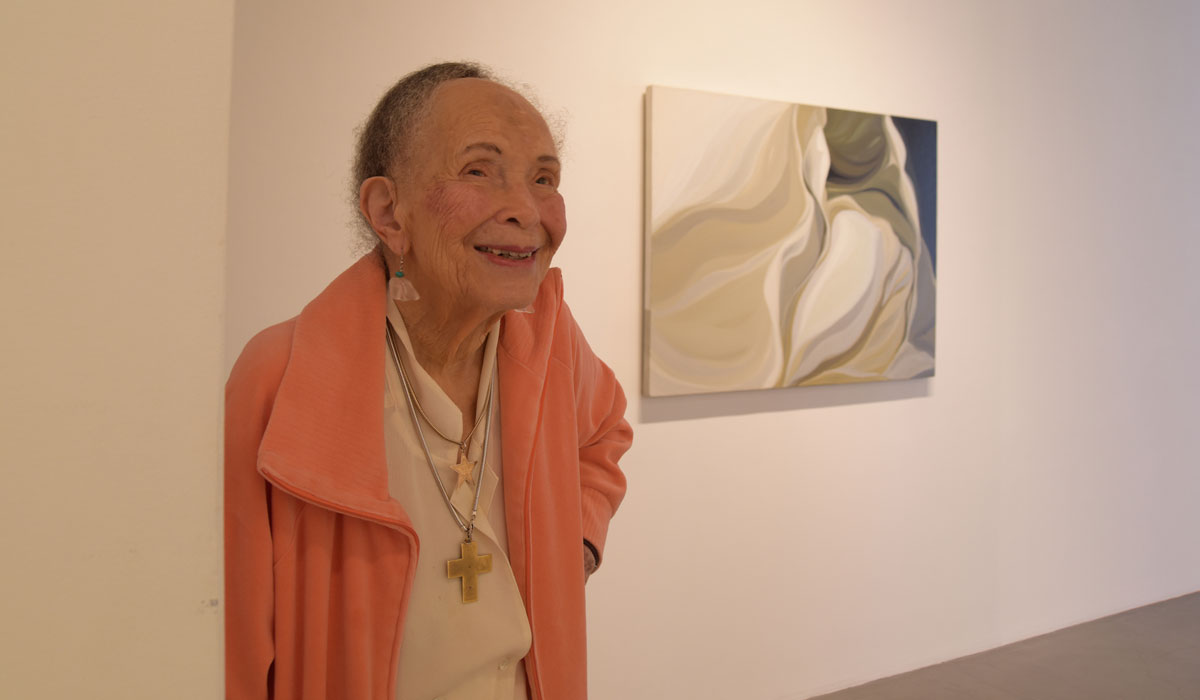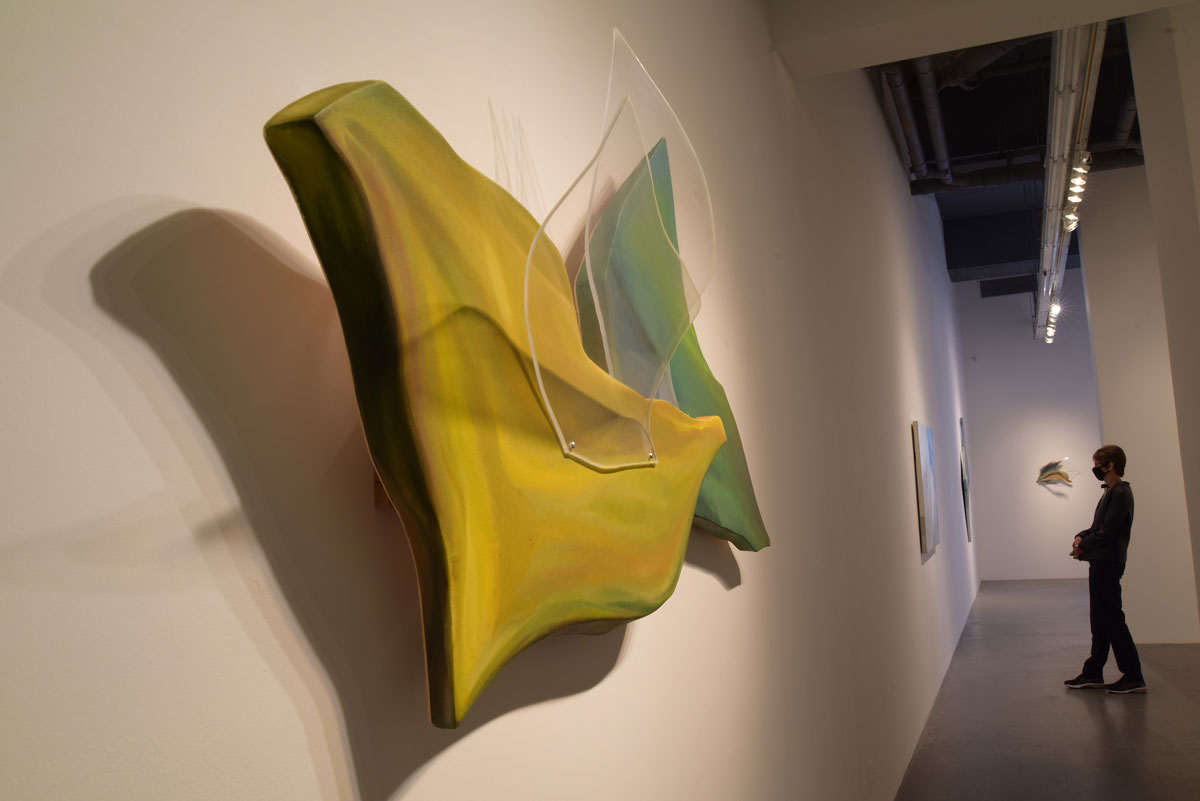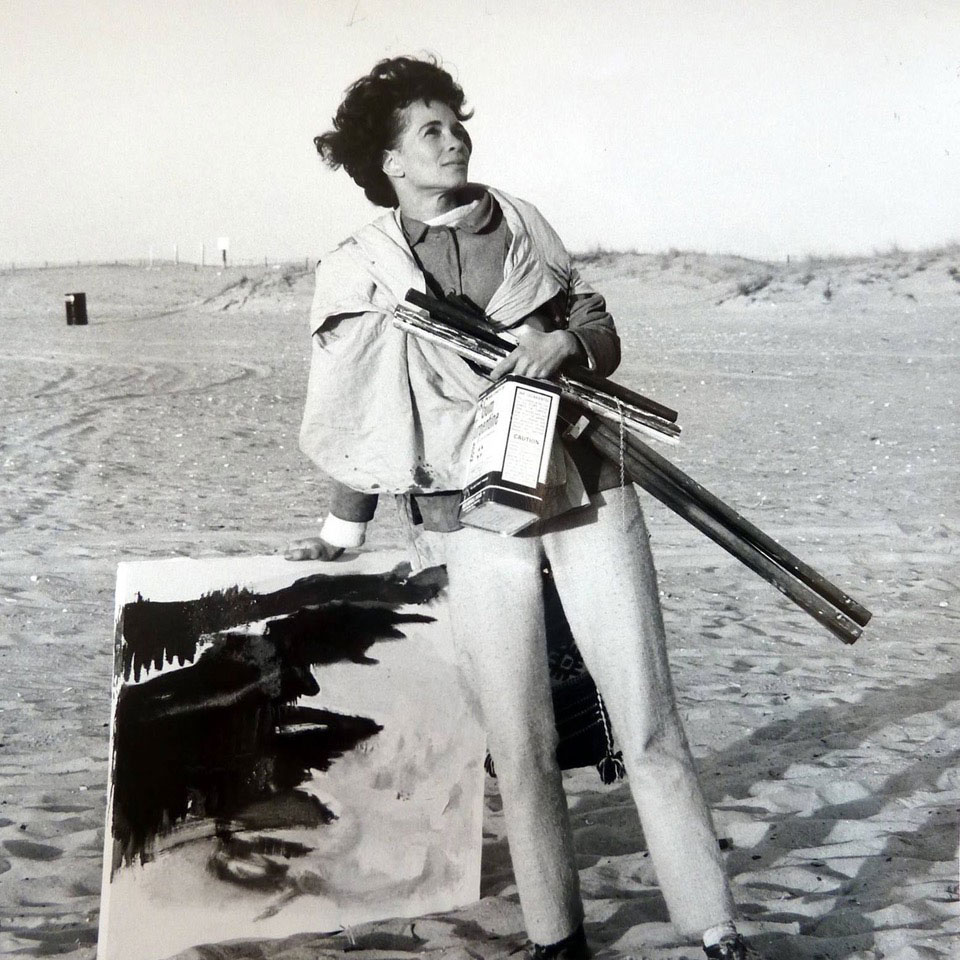

Any other serious artist would have leapt — lock, smock, and easel — at the opportunity: a solo show at a leading private art gallery in the trendy Chelsea section of Manhattan. But at 94, and having just entertained emissaries from the Smithsonian Institutions asking about the future of her archives, Lilian Thomas Burwell, M.F.A. 1975, was comfortable taking her time.
"Well, I didn't know who they were," says Burwell of Christine Berry and Martha Campbell, owners and purveyors of the eight-year-old Berry Campbell Gallery on W. 24th Street, in the shadow of the city's popular High Line.

Despite a long and productive career as both a two-dimensional painter and, for roughly the past two decades, creator of innovative three-dimensional "wall sculptures," the longtime Maryland-based artist had never before had an exhibition of her work in New York City. (Although her paintings have been exhibited at The National Museum of Women in the Arts and are included in the permanent collections of prestigious museums such as the Phillips Collection, America's first museum of modern art, both located in Washington, D.C.)
"I never had an orientation to working [at art] to make money, and I knew that I was limited in terms of experience in the market," confides Burwell, who made her living as an art teacher while living out another "spiritual" experience as an artist. "So, I needed to know 'Who are these people and what were they trying to do? Can I trust them?'
"And at this age, I have to be realistic about what happens to my work. I may have never thought of it as a way to make money, but I don't believe in just throwing it all away, either," adds Burwell with a sly chuckle. She "absolutely" agreed to donate her records to the Smithsonian. Contained in that history are her then-design of Washington, D.C.'s public school pre-secondary art curriculum and papers from her subsequent time as a member of the visual arts faculty at the city's Duke Ellington School of the Arts. She also served as a board member of the Smithsonian Institution Renwick Alliance and the Arlington Arts Center, founded the Alma Thomas Memorial Gallery, and was curatorial director of the Sumner Museum and Archives in Washington, D.C., from 1981 to 1984.
On the other hand, the extent and future of Burwell's personal art collection is (as every artist and art dealer knows) not a topic for public conversation.

What she and her partner are trying to do, Christine Berry was finally able to convince a hesitant Burwell, is represent post-war American artists that they consider overlooked or neglected, often because they are women and other times due to race or geography. Earlier this year, the gallery's presentation of works by Louisiana painter and sculptor Ida Kohlmeyer (1912-1997) was reviewed by The New York Times. Berry Campbell's curatorial vision also has sparked fruitful relationships with senior curators at the Smithsonian Museum of American Art, the National Gallery of Art, and Houston's Museum of Fine Arts, among others.

"It's shocking to say and hard to believe for me, but when I first saw Lilian's work, I did not know who she was, either," says Berry, an Upstate New Yorker who earned her undergraduate degree from Baylor University and a master's in art history and criticism from the University of North Texas. Her introduction to Burwell came in 2017 via the artist's inclusion in the acclaimed Magnetic Fields touring exhibition curated by Melissa Messina, the first U.S. presentation dedicated exclusively to "the formal and historical dialogue of abstraction by women artists of color."
"Really spurring me on, though, was this collector — a client of mine," Berry says. "He collects mostly African American art and had actually purchased a work from the show, and he said, 'You've got to see this woman. No one knows who she is and she does these fabulous wall sculptures.'"
What followed was a roughly yearlong courtship of Burwell by Berry Campbell, with help from Messina, who had established a relationship with the artist through Magnetic Fields. What resulted is Soaring, also curated by Messina, showcasing 15 examples from Burwell's portfolio and continuing at the gallery through May 28, 2021. The exhibition centers on the pivotal painting Skybound (1984), which marks the first time the artist cut into her canvas to create positive and negative space, and eventually leading to her now signature style of three-dimensional, painted wall sculpture.
The show's title also is an homage to the late David Driskell, M.F.A. 1962, Burwell's friend and contemporary and fellow Catholic University alum, who for many years served as Distinguished University Professor of Art at the University of Maryland. In 1997, on the occasion of Burwell’s survey exhibition at Hampton University Museum in Virginia, Driskell wrote the essay "Soaring with a Painterly Voice," in which he described Burwell's work as "transcendental in showing stylistic diversity of earthly beauty and cosmic vision."
Widely heralded for bringing African American art into greater public exposure and appreciation globally during the latter half of the 20th century, Driskell received the National Humanities Medal from President Bill Clinton in 2000. He died from coronavirus in April 2020 at the age of 88.

Asked whether her New York debut and growing reputation as an important voice in American abstract art is a "Better late than never" or "It's about time" story, Lilian Burwell looks patiently at her inquisitor through eyes that first opened in 1927 and indicates that she doesn't much care for the question. It presumes the end of something, when she has always been more interested in starting something.
"My whole motivation is I'm more of a teacher and preacher than anything else," says the grandchild of a Baptist minister, who married a Catholic and actually first arrived at CatholicU in order to study the foundations of catechism.
"If I can bring something out in you that you didn't know existed before, that's like I'm throwing a pebble in the water," she says. "It's starting something I have no idea where it's going to go. But to this day I hear things from [former] students that I had decades ago telling me one or two things I taught them that started them on a completely different line of exploration. That's worth 200 paintings to me."
Asked the same question about Burwell's ultimate arrival on the contemporary art scene, Berry says, "I think Lilian could have been a full-blown professional artist 100 percent. But, she loves teaching. So, for that reason, I don't think her work was included in as many shows, exhibitions over her life, and I think she was simply overlooked."
At the same time, says Berry, "I don't feel that there's any missed opportunity here. Lilian is somebody who, thankfully right now people are looking back at shows like Magnetic Fields and are open to seeing beyond what is just in the canon of art history. As a woman, as a sculptor, as an African American, she fits in a lot of categories, and we have people walking in here saying to us, 'Who is this artist? Why have I never heard of her? These are fantastic!'
"I think this is the right time for her."

Kevin M. Burke, associate vice president of Marketing and Commuications can be reached at burkek@cua.edu.